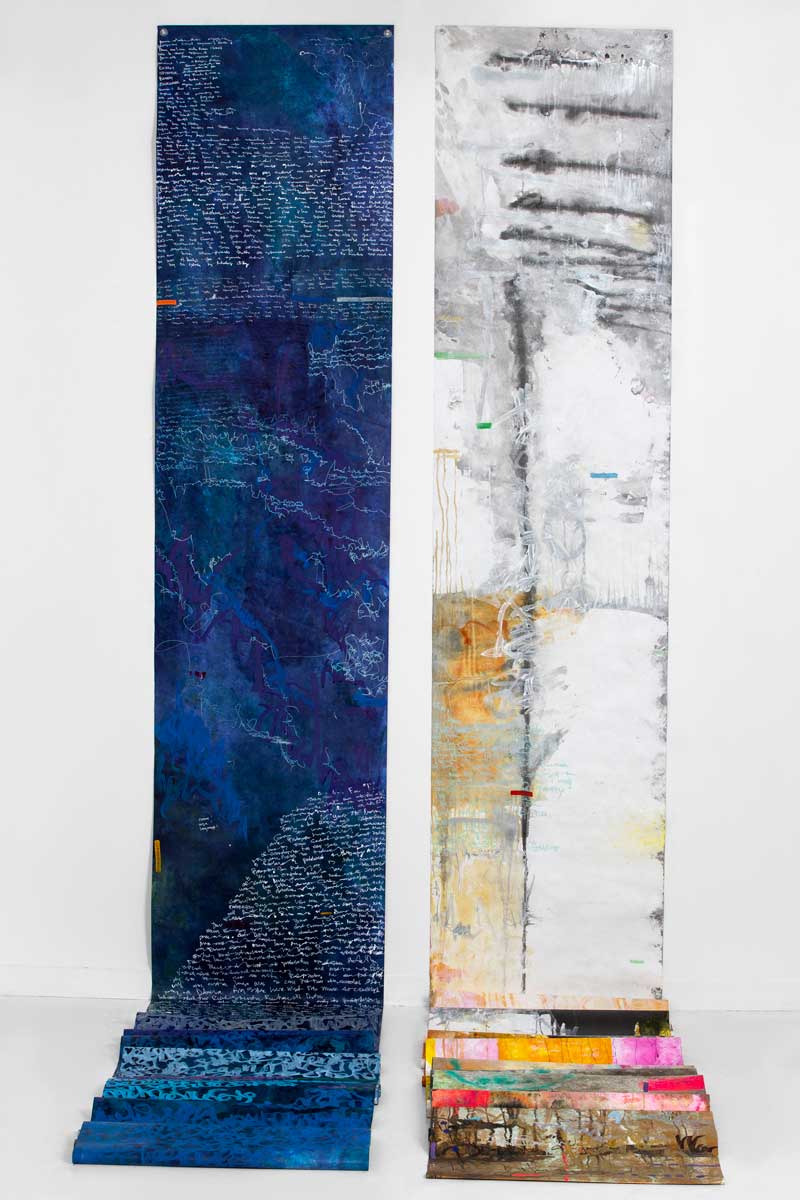Exhibits at the Capitol
See Minnesota artists tell Minnesota stories through art! The Third Floor Exhibit Gallery showcases the talents of a wide range of artists and reflects the broad diversity and experiences of Minnesotans.
The gallery is located in Rooms 320 and 321 on the third floor of the State Capitol and is free to the public during regular building hours. Artists are selected by the Capitol Art Exhibit Advisory Committee and approved by the State Capitol Preservation Commission.
Now on Display at the Minnesota State Capitol
3rd Floor Exhibit Gallery
Upcoming Meetings
The Capitol Art Exhibit Advisory Committee (CAEAC) will hold meetings virtually on:- Monday, November 17, 2025 from 11:00 a.m. to 1:00 p.m. This meeting will be hosted on Zoom.
Current Exhibit
122 Conversations: Person to Person, Art Beyond Borders - The Archive
October 1, 2025 - October 1, 2026
Artist: Anne Labovitz

Ann Labovitz, 122 Conversations: Person to Person, Art Beyond Borders-- The Archive is a curated collection of Anne Labovitz's decade-long international project, designed to amplify crosscultural connection through art and dialogue. The exhibition traveled to Duluth, Minnesota's five Sister Cities: Ranya (Kurdistan Region of Iraq), Växjö (Sweden), Petrozavodsk (Russia), Thunder Bay (Canada), and Ohara Isumi-City (Japan).
Anne Labovitz was born in Duluth, Minnesota and lives and works in the Twin Cities. She conducted 60 interviews with individuals around the world to inform this exhibition, resulting in a poignant display of color, resilience, and hope.
Cass Gilbert Library
The Life and Works of Cass Gilbert
This exhibit recognizes the life and works of one of the leading American architects of the early twentieth century, Cass Gilbert (1859-1934). After growing up in St. Paul, Minnesota, Gilbert studied at the Massachusetts Institute of Technology and spent time traveling in Europe. Shortly after his return to the United States, Gilbert apprenticed with McKim, Mead & White in New York, NY, and then returned to St. Paul, MN. There he established a career as a designer of residential, religious, and commercial buildings. The critical success of his first major public building, the Minnesota State Capitol (1895-1905), secured his national reputation.
L'etoile Du Nord Vault (& surrounding hallways)
Restoration Workers: The Men and Women that Made the Capitol Great Again
Photographer: Tom Olmscheid
Instead of simply photographing people working, former House Chief Photographer Tom Olmscheid, attempted to connect individually with the diverse workforce restoring the Capitol. Each person was asked to take a moment from his or her job to stop and look directly into the camera. Using a wide-angle lens to capture their full figure in the environment they are working in and surrounding area to give viewers a clear sense of where they might be within the building, Tom captured their faces, the tools they are using, the clothes they are wearing, and anything else that is indicative of that moment in time.
The diversity of the workforce is evident in the photographs of this exhibit. These individuals are more than electricians, plumbers, stone carvers, pipefitters, bricklayers, painters, restoration artists, and others who painstakingly display the mastery of their crafts. They are the working men and women of all ethnic backgrounds (42.5 percent of the workforce is represented by women and minorities) who were clearly proud to be an integral part of the glorious transformation of the Minnesota State Capitol.
Third Floor East Wing Hallways
Why Treaties Matter: Self-Government in the Dakota and Ojibwe Nations
Treaties are agreements between self-governing or sovereign nations. the story of Native nations within Minnesota is the story of making treaties — from the time before Europeans came to this land, through treaty-making with the United States, to the growth of tribal self-determination in our time. This exhibit is presented in collaboration with the Minnesota Indian Affairs Council, the Minnesota Humanities Center, and the Smithsonian Institution's National Museum of the American Indian. This project is funded in part with money from the Arts and Cultural Heritage Fund that was created with a vote of the people of Minnesota on November 4, 2008, and the Patrick and Aimee Butler Family Foundation.
